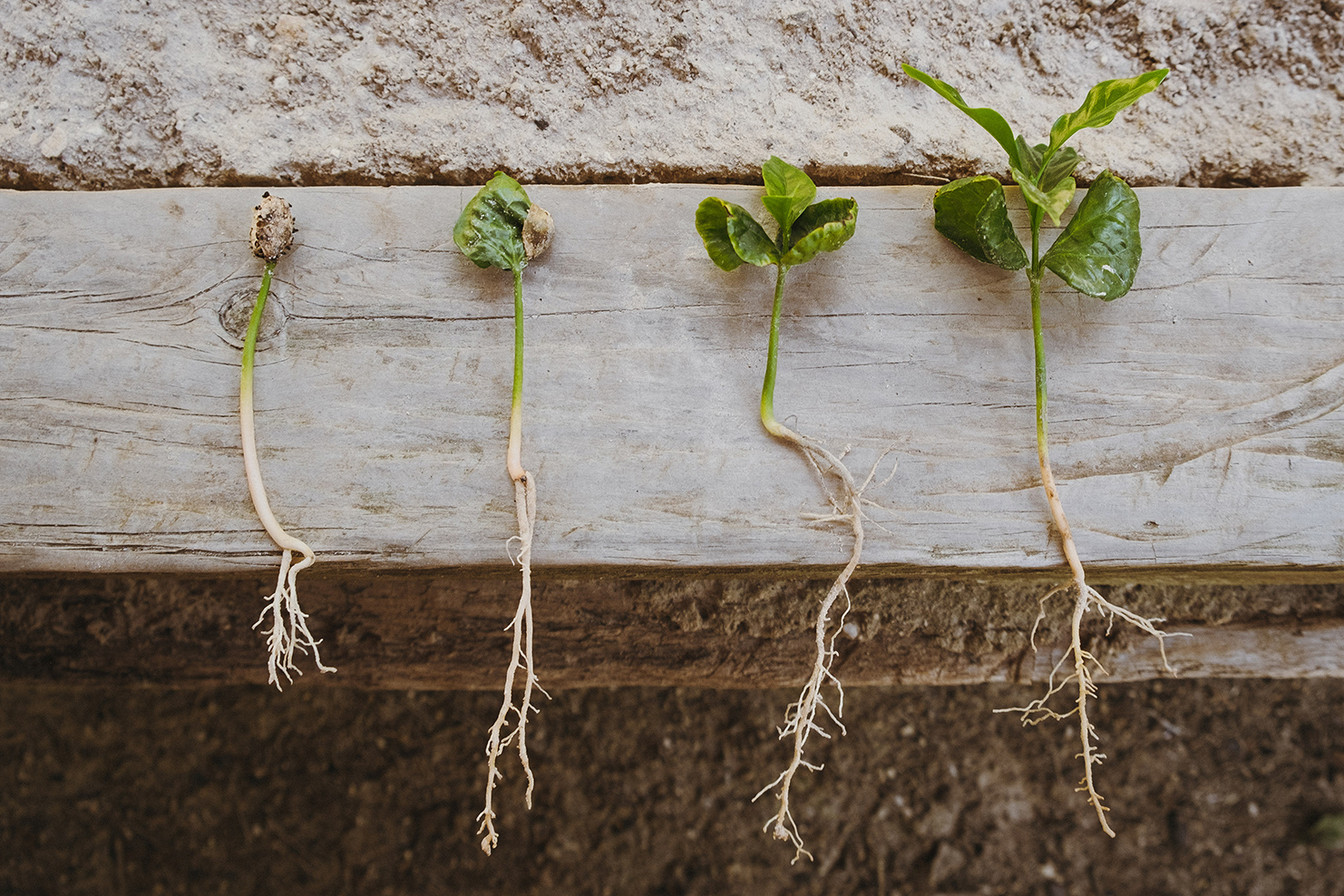
Last month we talked about the crop cycle at La Bolsa and the harvest pattern that is repeated year after year. The first harvest for a coffee tree is usually three years after planting and the trees are typically productive for thirty years or so before being replaced. Farmers either buy in seedlings or select their own seed from their crop. Seed selection is the first critical decision in the tree cycle with a variety of factors all being considered. These include: the cultivar’s ability to resist disease, pests, and climate variability; it’s productivity and cup quality; and the local growing and harvest conditions. The team at Finca La Bolsa have a nursery so they choose seeds to germinate from their own best trees. Siting a nursery on a farm takes consideration. The area must be slightly sloped and well-drained, protected from the elements, and easily accessible. Running a nursery is a full-time job as the plants need irrigation and constant weeding.
Farmers will usually plant 25% more seedlings than required to allow for any problems with the germination or plantlet development. At La Bolsa, seedlings take between 45 to 60 days to germinate and unfold their first leaves. Once standing, they are transferred to their own containers where they have some space to grow and do not have to compete with other plants for nutrients. Between eight to ten months after germination the tiny trees are planted in the field. The team at La Bolsa plant around 25,000 new trees every year. Once in place, the trees will be looked after in the fields and will be in full production within another two years.
The first pruning decisions are made depending on the growing and harvesting conditions. Pruning is one of the best tools a farmer has in regulating their crop and establishing the kind of crop cycle they wish to have on their farm. It is a highly debated topic and there are many ways to go about it – the only consensus is the plant should be kept productive in the most sustainable way for that farm. The team at La Bolsa moved away from selective pruning as it requires a lot of labour and makes the crop volume more difficult to predict. They now have a general three-to-five-year plan with the slower growing varietals left longer between pruning.
As the tree ages, a decision must be made about when to replace it. Any tree not performing as expected will be removed but it may not be immediately replaced. The ideal plot will have trees all roughly the same age, in their own pruning and crop cycles by row. Replacing just a few of these makes for more work across the farm as the new trees will be out of sync with the older ones. The younger trees also find it difficult to compete with the root system of the more established trees. Some plots on the farm will be left semi abandoned and then fully renovated. On our last visit to La Bolsa we saw Ventana Grande, a plot that had been left for three years and was now being planted out with a new varietal for the farm. La Huerta is a plot that is being left while the team decide what to do with it. Growers are always considering the longer-term implications; a poor decision today could mean plants have to be pulled out within a couple of years and a great deal of work is wasted whereas a good decision can mean thirty years of great production and good income.
Monmouth x
